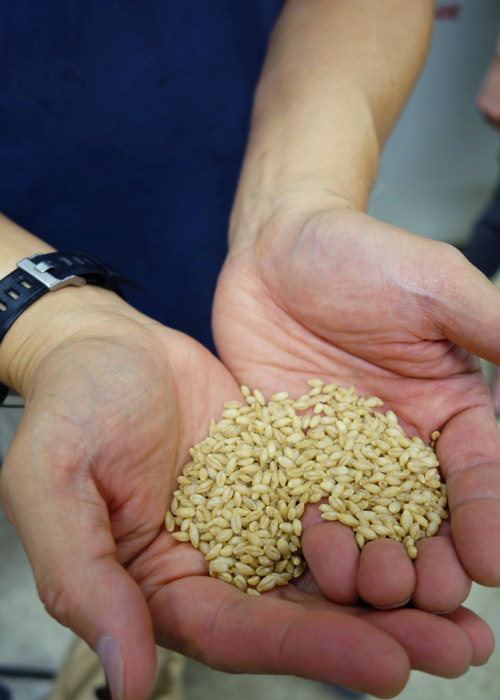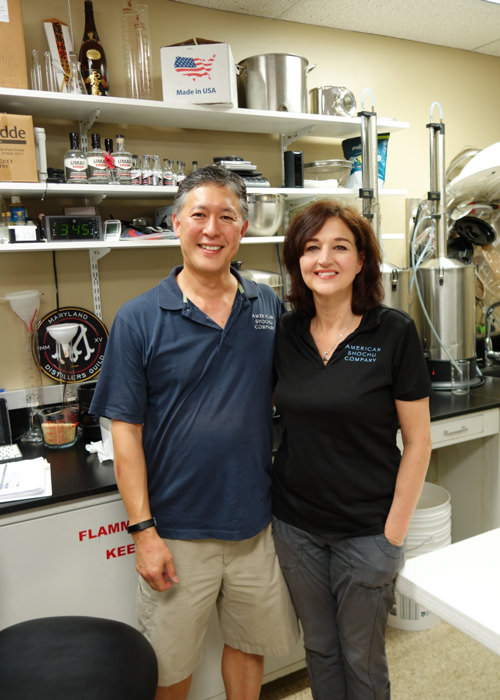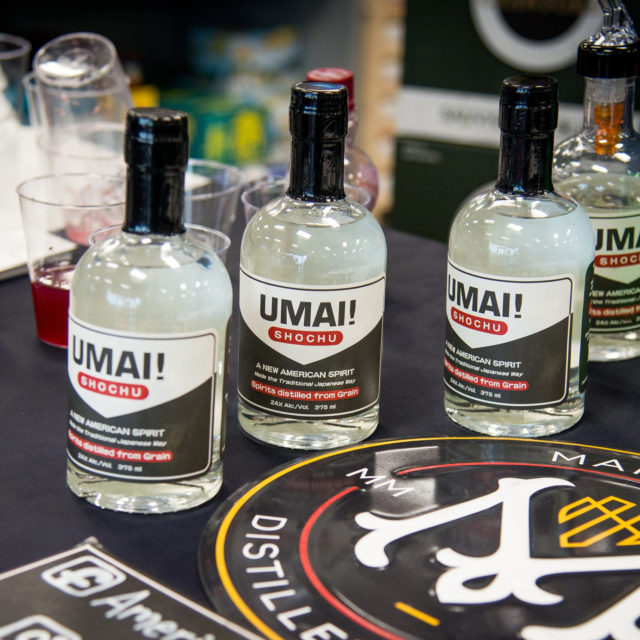A book helped change Taka Amano’s life. One day, the Japanese-American businessman, an “Issei,” or first-generation immigrant, walked into the The Brewing Society of Japan in Tokyo and picked up a copy of “Shochu Manufacturing Methodology.”
When he was told that the book was not available to just anyone, he explained his bonafides — having gone to one of Tokyo’s elite schools and spending 10 years working in Japanese imports. He won the brewing society over.
That book in part formed the basis of his newest venture, the first shochu distillery in North America. Taka and his wife Lynn make their shochu, Umai!, in a facility in Frederick, Md.
“My career has been about representing the best of Japan here in America,” Amano says. For him, that means bringing the shochu he drank during his frequent trips to Japan to the U.S. After all, he says, there’s “nothing cooler than shochu. Nothing that hasn’t had an impact in the U.S. that really should.”

Thus far, shochu has had an image problem in the United States. Americans generally don’t know what it is, or they confuse it with sake or South Korean soju.
Sake is brewed rice, while soju and shochu are distilled from a variety of products. Barley and sweet potatoes are most commonly used to make shochu, though the distilled spirit can also be made from vegetables, grains, and sugar.
Shochu is fermented by a special mold called koji and undergoes a process called parallel fermentation, in which saccharification, or the process by which complex sugars are broken down into simpler sugars, and fermentation happen simultaneously. In most alcoholic beverages, those two processes happen successively.
Also, shochu is Japanese. Well, it was.
Shochu currently comprises a very small category of beverage imports to America, unlike other Japanese beverages such as Japanese whisky or sake. Although shochu grew 10.5 percent between 2017 and 2018 in the U.S., that growth represented only about 5,300 cases in 2018, according to IWSR Drinks Market Analysis.
And so to make Umai!, Amano had to start from scratch. Even the particular strain of koji used to ferment shochu, aspergillus luchuensis, was not listed in the USDA database. He registered it himself when he imported it.
He also had to decide whether to use sweet potatoes from North Carolina, where he went to school and where his wife Lynn is from, or barley. He chose barley. “We take organic pearl barley — stuff you make soup with,” Amano says.
Despite his traditional approach, Umai! is a craft product. Walking through the biotech incubator space where it’s made — a space Amano felt comfortable as an “old bio tech guy” — and entering what is likely the tiniest distillery at 210 square feet, with a Turbo 500 experimental still, you can see the craft put into it by the couple. There is lab equipment everywhere and bubbling buckets of mash.
Ami Nakanishi, a vice president of MTC Sake, the Japanese importer that distributes Umai!, says this shochu is something altogether new. “I believe it belongs in its own category,” Nakanishi writes VinePair in an email. “Same idea for Japanese sake versus craft sake in America. Tax and Trade Bureau-wise, [the] category should be the same. But they are still two different categories/products for me in considering concept or quality.”
That’s something Nakanishi believes can help promote shochu, rather than sow confusion. Because “Umai! is [an] America-based product,” writes Nakanishi, more of a “variety of people might be interested in trying the product and, in that case, more people will recognize shochu.”

That’s one way to get shochu noticed, but the real Trojan horse, according to both Amano and Nakanishi, is cocktails. Shochu is making its way into the hands of bartenders, who they believe will drive its growth.
Celebrity chef Bryan Voltaggio was Umai!’s first customer at his Frederick restaurant, Volt, and says he’s “excited to use American shochu; to have this versatile spirit that is uniquely produced in our own backyard gives us the opportunity to be creative in our cocktail program.”
He especially likes the fact that it’s low-alcohol, something Amano is counting on. Looking at the success of hard seltzers, Amano points to the Japanese Chu-Hi, a shochu cocktail made with soda. Amano argues “that low-alcohol, easy-to-drink cocktail” is exactly what American drinkers need “in order to get shochu on the map — just like it happened in Japan.”
That positions shochu and shochu cocktails as alternatives to beer and wine. “Clearly there’s a market for that product,” Amano says, “not a beer, not a wine.”
In that case, does it matter if Americans can’t get it right — shochu, soju, sake? Amano says he’s stopped going into an extended explanation about what shochu is. When Amano is testing people on his product and they ask what it is he says, “I don’t even say it’s shochu. I say it’s the smoothest drink, it’s a new trend, it’s made in Maryland.” According to Amano, they win most tasters over that way.
Whatever you want to call it, Amano says, “there’s clearly a market for this. That’s the market we want to get it into.”
